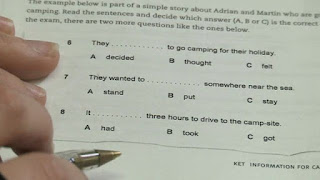Can an unmarried partner of a UK citizen apply under Surinder Singh route (like a spouse would do)?
We are often asked about this
and generally about the Surinder Singh route. It is used by British citizens
and their family members to secure a UK visa for a non-EU family member in the
UK – but under the EU law. Normally, spouses (and civil partners) of EEA
citizens, such as Irish or French or Polish, are applying using the European
law. This is where they get an EEA Family Permit for 6 months outside the UK or
a Residence Card for 5 years if applying inside the UK.
However, very often
British citizens, or rather their non-EU family members, are trying to apply
for a visa using the same route. After all, the UK is in the EU and British
citizens are the EU citizens, aren’t they? Those who do try to apply often get
a shock of being told that this routes does not apply to family members of UK citizens,
only to those of EU (non-UK) citizens. Why? Because there has to be ‘movement’
between the EU member states and ‘British in Britain’ represents no movement!
On the other hand, there
is one way around it: Surinder Singh route, named after the case with the same
name. It allows non-EU family members of British citizens to apply for a UK
visa using the European law, as opposed to applying under the Immigration
Rules. Let’s take a most common situation: a spouse of a British citizen. Under
the Surinder Singh route spouses of UK citizens can apply for a Family Permit
and/or Residence Card under the EU law and not under the Appendix FM of the
Immigration Rules.
And who can blame them?
Applying under the EU law means no English test and no Financial Requirement (no need to prove the income
of £18,600). Plus it is much cheaper, a Family Permit (if coming from outside
the UK) is free of charge, ie free of the official Home Office fee, compared to
£885 fee for those applying under the Immigration Rules. A Residence Card (if
applying inside the UK) costs only £55 as opposed to £601-£1,001 fee for an
FLR(M) application! And getting a Residence Card for 5 years is the icing on
the cake! That’s instead of a visa for 2.5 years, then extension for another
2.5 years (with another fee) for those under the Appendix FM.
The most relevant
condition, however, is that a British citizen worked or was self-employed in
another EU member state before returning to the UK. This is how we get the ‘movement’
referred to in the beginning of this post. So, 'British working in France, then moving back to the UK' would work. In case of spouses, both UK and non-EU spouse must have lived together in another EU member state and been married BEFORE returning to the UK.
Finally, this route only
applies to ‘family members’, as defined by the European regulations, ie to
spouses and civil partners of UK citizens but NOT to unmarried partners! Unmarried
Partners (usually those who lived together for 2 years but not married) are
treated as ‘extended family
members’ (emphasis on ‘extended’) and therefore, unfortunately do NOT qualify
for a Surinder Singh route under the current rules.
If you need help with
understanding who is a civil partner and who is an unmarried partner, please
read an earlier post: http://1st4immigration-visas.blogspot.co.uk/2013/06/for-purpose-of-uk-spousepartner-visas.html
For an individual advice or to make an application please contact us: info@1st4immigration.com or visit www.1st4immigration.com
If you are an Immigration Adviser or a Solicitor please visit our
immigration Training and CPD website: www.1st4immigration.com/training

